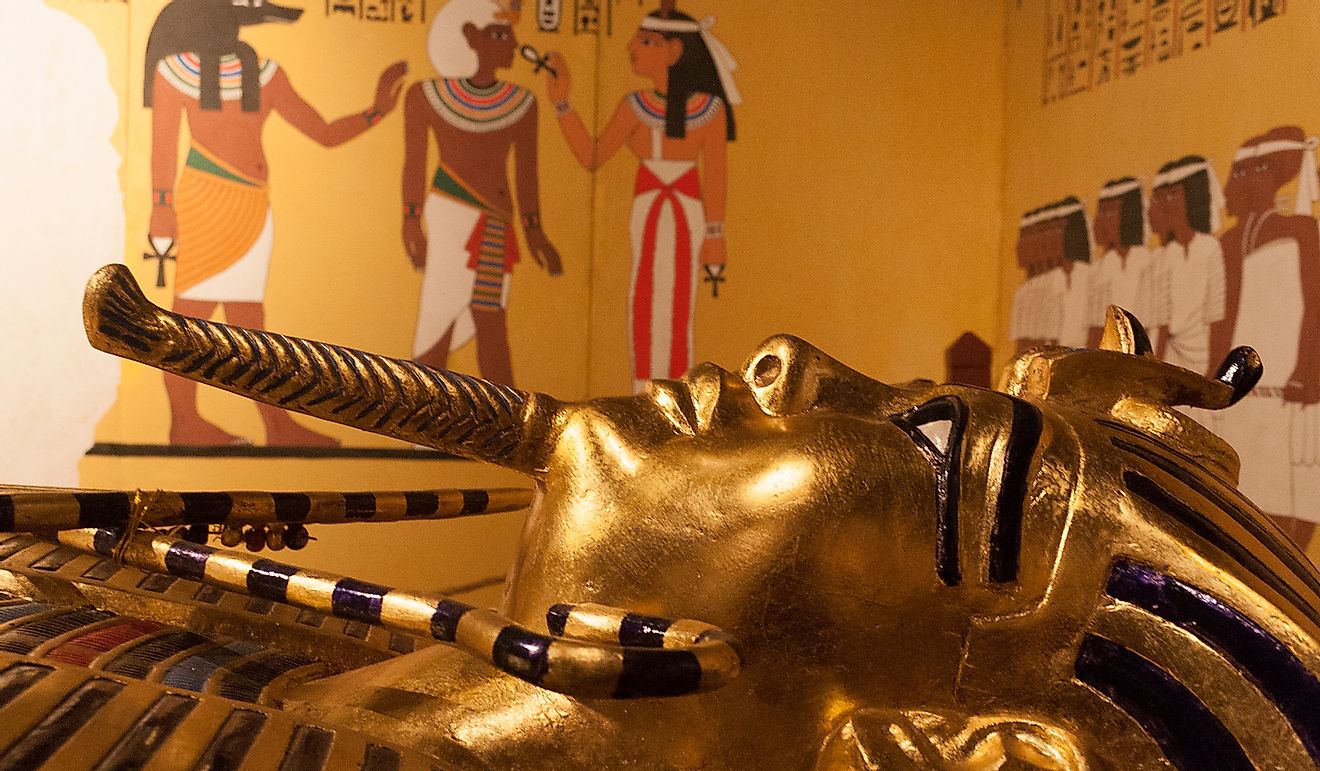Why Was Tutankhamun's Tomb So Important?

Most archaeologists regard the discovery of the Egyptian Pharaoh Tutankhamun's tomb as the most important. Unlike tombs belonging to other pharaohs that had been vandalized by grave robbers and private collectors, Tutankhamun's tomb was found to be mostly intact. Its discovery, therefore, provided valuable information on the religion, rituals, and culture of the ancient Egyptians. The development also sheds light on the elaborate mummy preservation process that included drying of the body, removal of the digestive tract and brain and embalming of the corpse.
Tutankhamun’s Reign
King Tutankhamun ascended to the throne at the age of nine and ruled until 1324 BC when he died aged 19 years. He notably reversed religious reforms that had been enacted by Pharaoh Akhenaten, his father. Tutankhamun believed that his father's attempts to replace the old gods with one deity, Aten, had angered the gods who in turn ignored Egypt. To match the Kingdom's return to the old gods, the young king changed his name from Tutankhaten to Tutankhamun. At the time of his death, Tutankhamun was likely tall but frail. Tests conducted on his mummy revealed that he had suffered multiple malarial infections and that he suffered from a crippling bone disease in his left foot. Archaeologists believe that he was involved in a chariot accident that resulted in a broken leg and a subsequent infection of the injury that lead to his death. Pharaohs that came after him ignored his reign due to his tainted connection to his father and in so doing unintentionally preserved his tomb from would-be robbers.
Discovery Of His Tomb
The tomb was discovered by Howard Carter, an archaeologist who had spent five years exploring the Valley of the Kings. Carter and his team found the entrance to the tomb in November 1922. Once they finally got inside, Carter was astounded by the treasures that he found inside. Over 5,000 items were found inside including chariots, gold jewelry, clothes, a gold coffin, a gold death mask, weapons, and a gold throne. The discovery sparked what some call Tut-mania in the western world. Artifacts from the tomb toured museums around the world and inspired numerous films and fashion.
Prior Attempts To Breach The Tombs
Archaeologists believed that there were at least two attempts to rob the tomb. Former workers possibly attempted the first robbery. It likely resulted in the outer chambers filling up with rubble. During the second attempt, robbers tunneled into the burial site but were also unsuccessful in breaching the inner burial chambers. Evidence collected indicates that efforts were made to tidy the burial chambers after the attempts. The tomb's walls were closed off, and it remained undisturbed for over 3000 years until its discovery in 1922.
Mysteries Behind The Walls Of Tutankhamun's Tomb
Tutankhamun's tomb was unusually small. Some archaeologists believe that the tomb's small size was likely because his death was unexpected. There is evidence to show that some of the objects found in the tomb were reused. On some of the artifacts, the name of Queen Nefertiti had been carefully removed, and that of Tutankhamun inserted. The golden death mask worn on his mummy is also thought to have initially been meant for Nefertiti. Some have argued that Tutankhamun's death prompted the walling of Nefertiti's tomb and the hurried construction of his own. Radar tests conducted in the tomb revealed possible open spaces behind some of the walls which could have belonged to Queen Nefertiti's tomb. Experts, however, caution that the findings could likely point to natural features as opposed to tombs.







